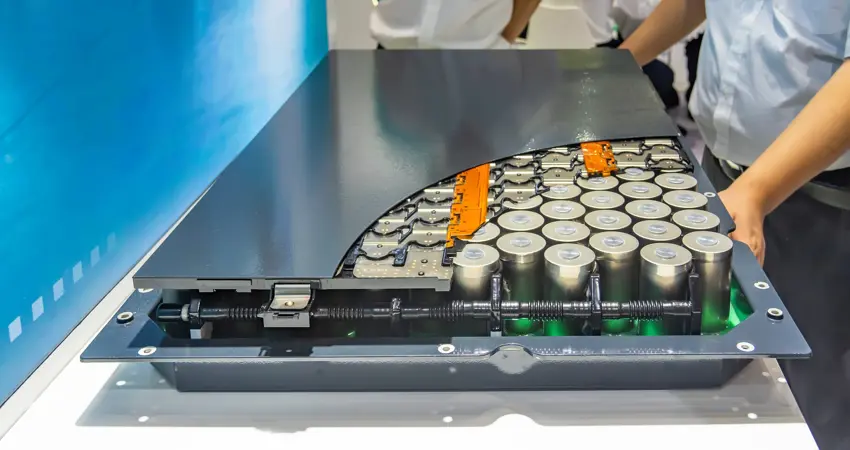27 Aug 2025
Researchers develop one-second test to give EV batteries a second life
The new technique, called multi-channel, multi-frequency electrical excitation response (MMER), is fast, non-invasive, and scalable to the pack level.

Stock photo showing lithium battery pack module for electric car
By 2035, around 150,000 tonnes of electric vehicle batteries in the UK are expected to reach the end of their life each year. At today’s market prices, those packs contain hundreds of millions of dollars’ worth of lithium, nickel and cobalt. Without effective reuse or recycling, this rising wave of waste risks locking away critical resources, while discarded packs can leak toxic materials, catch fire in landfills and create costly clean-up challenges.
Most of these batteries still retain about 80 per cent of their initial capacity, which makes them suitable for less demanding uses such as energy storage. Until now, however, the process of testing used batteries to see if they are safe and fit for reuse has been slow and expensive.
Researchers at the Electrochemical Innovation Lab, University College London (UCL) and the Department of Engineering Science have developed a diagnostic method that can check the health of a battery module in about one second. Conventional methods can take minutes to hours per cell, meaning a single module might require days of testing. The new technique, called multi-channel, multi-frequency electrical excitation response (MMER), is hundreds of times faster, non-invasive, and scalable to the pack level. It can even perform health checks in real time while batteries are being charged or discharged.
"One of the biggest barriers to reusing EV batteries is knowing, quickly and accurately, which ones are still good enough. This breakthrough means we can check the health of a whole module in seconds."
Professor Paul Shearing, Statutory Professor in Sustainable Energy Engineering, University of Oxford
In a demonstration, the team, led by Dr Shangwei Zhou and Dr. Rhodri Jervis at UCL, tested used batteries from an end-of-life Tesla Model S using the MMER approach. Their study, Batch diagnosis of batteries within one second, has been published in Joule.
Dr Shangwei Zhou developed this technique based on similar diagnostics for hydrogen fuel cells, but Li-ion batteries represent some particular challenges in their complex operation that make them more difficult to diagnose with traditional electrical techniques. He says, “The very fast nature of this diagnostic technique allows us to study the batteries while they are actually operating, charging and discharging, which has not been possible before. This could unlock advanced ‘live’ understanding that could be used in the on-board control systems of electric vehicles”.
Dr. Rhodri Jervis, Co-director of the Electrochemical Innovation Lab at UCL says, “The beauty of this technique is that it is rapid and highly scalable – this means that it will have impact in understanding batteries across all three stages of their lifetime: after manufacturing for quality assurance, during operation in the vehicle, and at the end-of-life of the pack to inform recycling options.”
Professor Paul Shearing, Statutory Professor in Sustainable Energy Engineering and Director of the Oxford Martin School Programme on Circular Battery Economies, says: “One of the biggest barriers to reusing EV batteries is knowing, quickly and accurately, which ones are still good enough. This breakthrough means we can check the health of a whole module in seconds. That makes large-scale reuse viable and will help batteries last longer, perform better and create less waste.”
The implications go far beyond the UK. Around 760 million people still lack access to electricity, most of them in sub-Saharan Africa and South Asia. Redeploying used batteries could reduce costs, extend lifetimes and support renewable energy access in these regions. But without rapid and reliable diagnostic tools, uncertainties around safety and performance have prevented this opportunity from being realised.
The researchers say MMER is a step towards overcoming these barriers. Supported by the Oxford Martin School, the Faraday Institution (Degradation and ReLiB projects) and the Royal Academy of Engineering, the work points to a future where second-life batteries help build a circular economy, cut the need for new mining and also expand affordable clean energy access worldwide.




